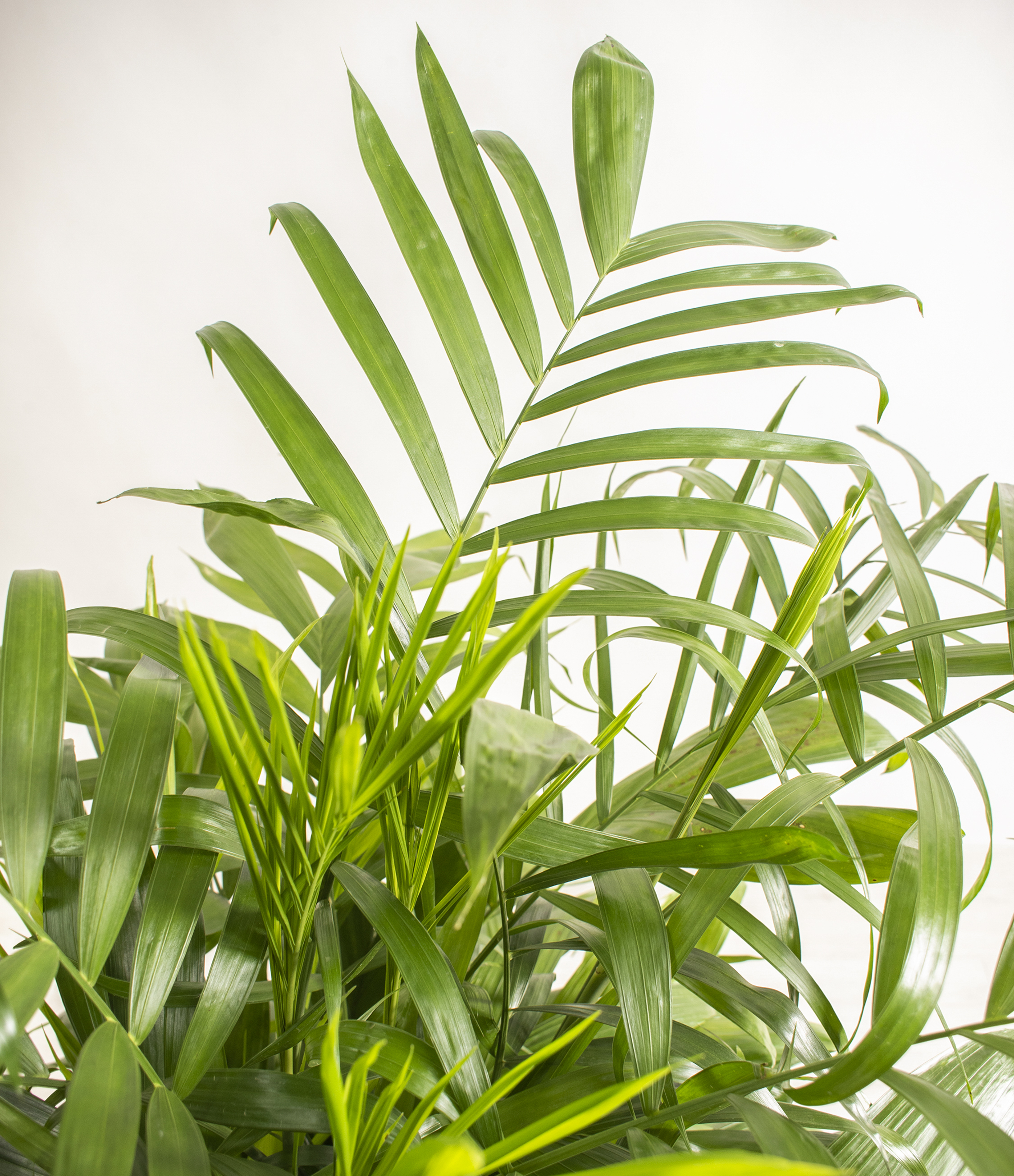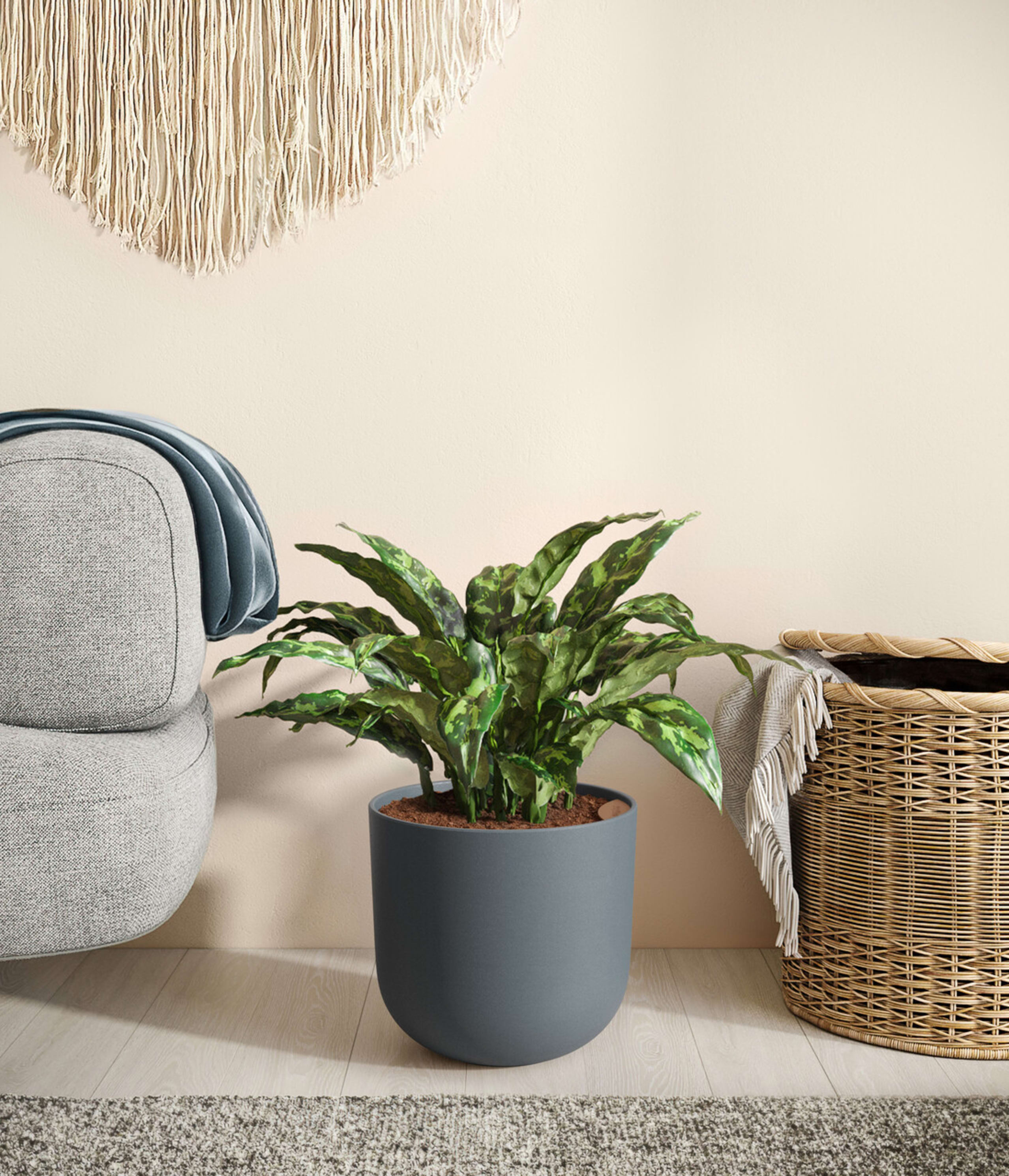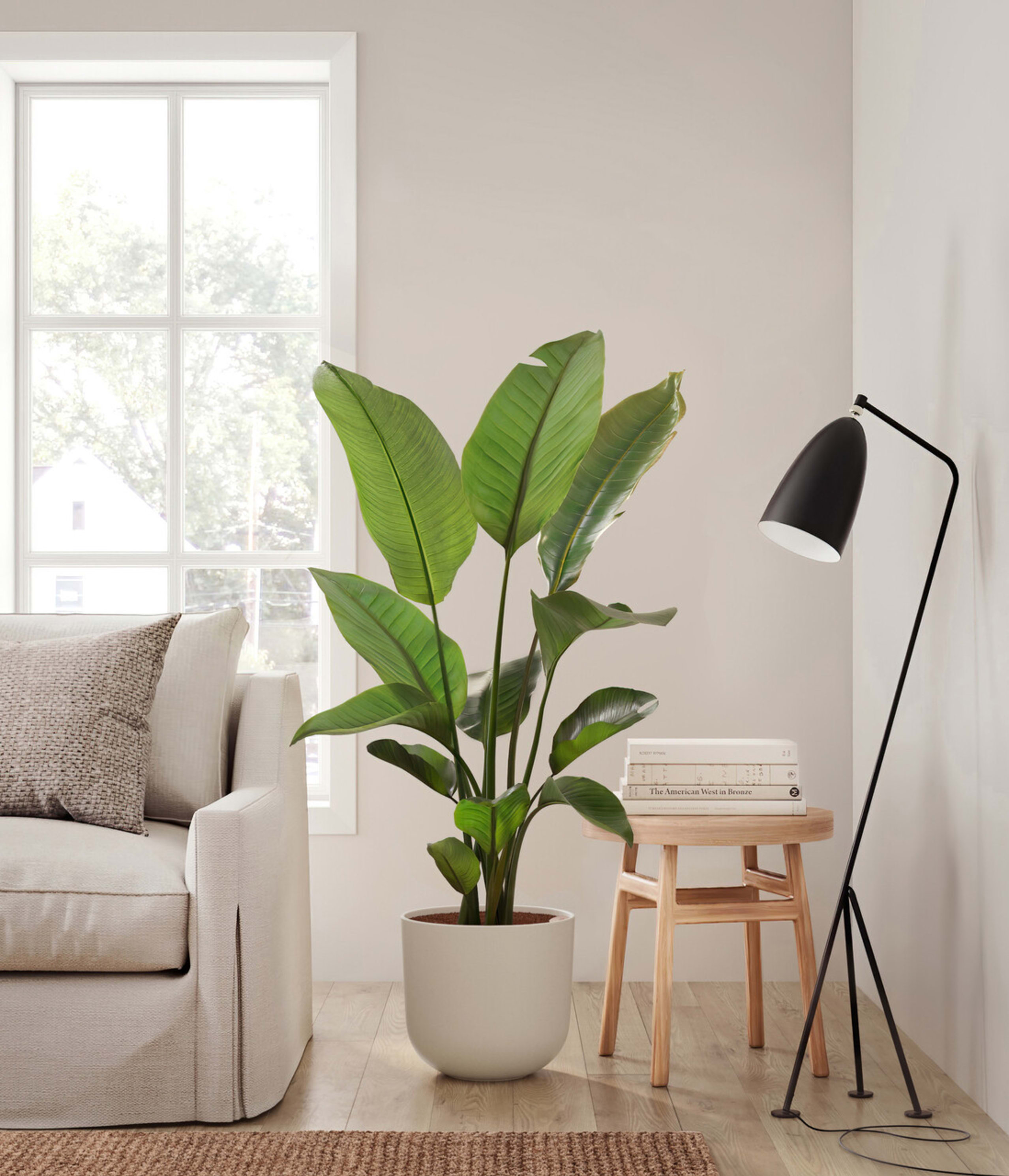Plant care library / Florida Bamboo Palm
How to Care for Florida Bamboo
About Florida Bamboo Palm
Florida Bamboo Palm brings the jungle indoors with a splash of rich green and a sweet spot of shade, growing clusters of tall and slender trunks resembling the beloved bamboo. Due to its resemblance to bamboo, several palm species fall under the umbrella term 'bamboo palm.'
Native to the tropical forests of the Yucatán Peninsula of Mexico and South America, where it lives in the shade of large trees. It is cultivated as a special hybrid in Florida and made to thrive as a voluptuous indoor plant.
Other common names
- Reed Palm
- Clustered Parlor Palm
- Cane Palm
- Chamaedorea Seifrizii
How Often Should I Water My Florida Bamboo Palm?
Although the bamboo palm is native to tropical climates and thrives in swampy landscapes, it can also thrive under arid conditions. Its highly adaptable nature allows for it to be moved indoors, and it is even known to be drought tolerant. With easyplant, watering your Florida Bamboo Palm is simple, Make sure to check the easyplant reservoir once a month and fill it when empty, and you're all set!
For those who don't have easyplant, the Florida Bamboo Palm should be moderately watered with proper drainage, but it does not respond well to standing in water.
Florida Bamboo Palm Light Needs
Florida Bamboo Palm grows best in a space with bright indirect light, where the sun rays are diffused, and can also adapt to spaces with medium to low light. Avoid placing it in spaces without natural light or with direct sunlight.
Florida Bamboo Palm Plant Care
On its first few days at home, your Florida Bamboo Palm may lose several leaves, or leaves will turn yellow. In this situation, there is no reason for concern. Simply shake off or cut the leaf, and look forward to new and better-adjusted leaves growing.
To help it grow optimally and evenly, occasionally dust the leaves and rotate the pot by a ¼ turn once a month. To maintain its aesthetic shape and height, you may periodically prune it to your liking. Florida Bamboo Palms should be fertilized three times a year during Spring, Summer, and Fall.
How Big Do Florida Bamboo Palm Plants Grow?
The upside of the Florida Bamboo Palm is that the plant is highly adaptable. Though they grew slowly and steadily, they won't overcrowd a space of other plants cohabitating alongside it. Bamboo palms can be planted next to one another or other trees since they will easily spread over root buttresses.
If properly cared for, a Chamaedorea Seifrizii's height can reach between four to ten feet tall and three to five feet wide. The typical pot size for a bamboo palm is between 7 and 15 gallons. Once the palm reaches maturity, between two to five years, the Bamboo Palm produces a flower that bears fruit as small as a pea that blackens when ripe.
Temperature & Humidity
Florida Bamboo Palm needs to be consistently moist to avoid drying out. As a household plant, the two main spaces you want to avoid placing your palm are by an air-conditioning or heating vent.
If the air in the home is dry, there is a way to ensure the plant receives adequate humidity. Take a deep saucer and fill it with rocks and water. This method will provide the proper humidity without saturating the plant's roots.
Surprisingly, Bamboo palms can tolerate cold temperatures as low as 35˚F; however, frost and frigid cold are not favorable conditions. The ideal temperatures for this plant are in the 65 to 80˚F range.
Are Florida Bamboo Palm Toxic for Pets & Kids?
Some plants look great in the home and can adapt well to the indoor environment, but they are unsafe to keep in the house. When considering a houseplant, it's important to know if there is anything toxic about that plant that could harm children or animals if touched or ingested.
Florida Bamboo Palm is non-toxic and safe for humans and animals alike. However, the fruit the plant produces is not edible and can cause an allergic reaction if ingested.
Troubleshooting Common Problems with Florida Bamboo Palm
If you notice the leaves are becoming brown or crispy, relocate the pot to a less directly lit location.
If you notice the leaves are becoming yellow, relocate the pot to a more directly lit location.
Frequently Asked Questions about Florida Bamboo Palm Plant
- How Fast Do Florida Bamboo Palm Grow?Florida Bamboo Palm grows at a slower rate, taking two to five years to reach full maturity. One of the markers of maturity is beautiful Bamboo Palm flowers that occur during the summer months and are yellow in color. After the flower, small red berries appear that turn black when fully ripened.
- Do Florida Bamboo Palms Spread?In terms of their roots, the Florida Bamboo Palm has shallow roots that are not invasive, so you can plant other bamboo palms or trees relatively close to one another. In terms of propagation, this plant does so through its seeds, which take around 6+ months to germinate.
- Is Florida Bamboo Palm Easy to Care for?If you see bugs on the Bamboo Palm, they are likely spider mites which tend to occur in a dry area. If you have these pests, use a soapy mixture twice a day. If that doesn't work, try a professional pest remover. Bamboo Palm diseases to look out for are scale, rot, or mealy bug.

 Small Plants
Small Plants Medium Plants
Medium Plants Plants Collections
Plants Collections Large Plants
Large Plants Huge Plants
Huge Plants